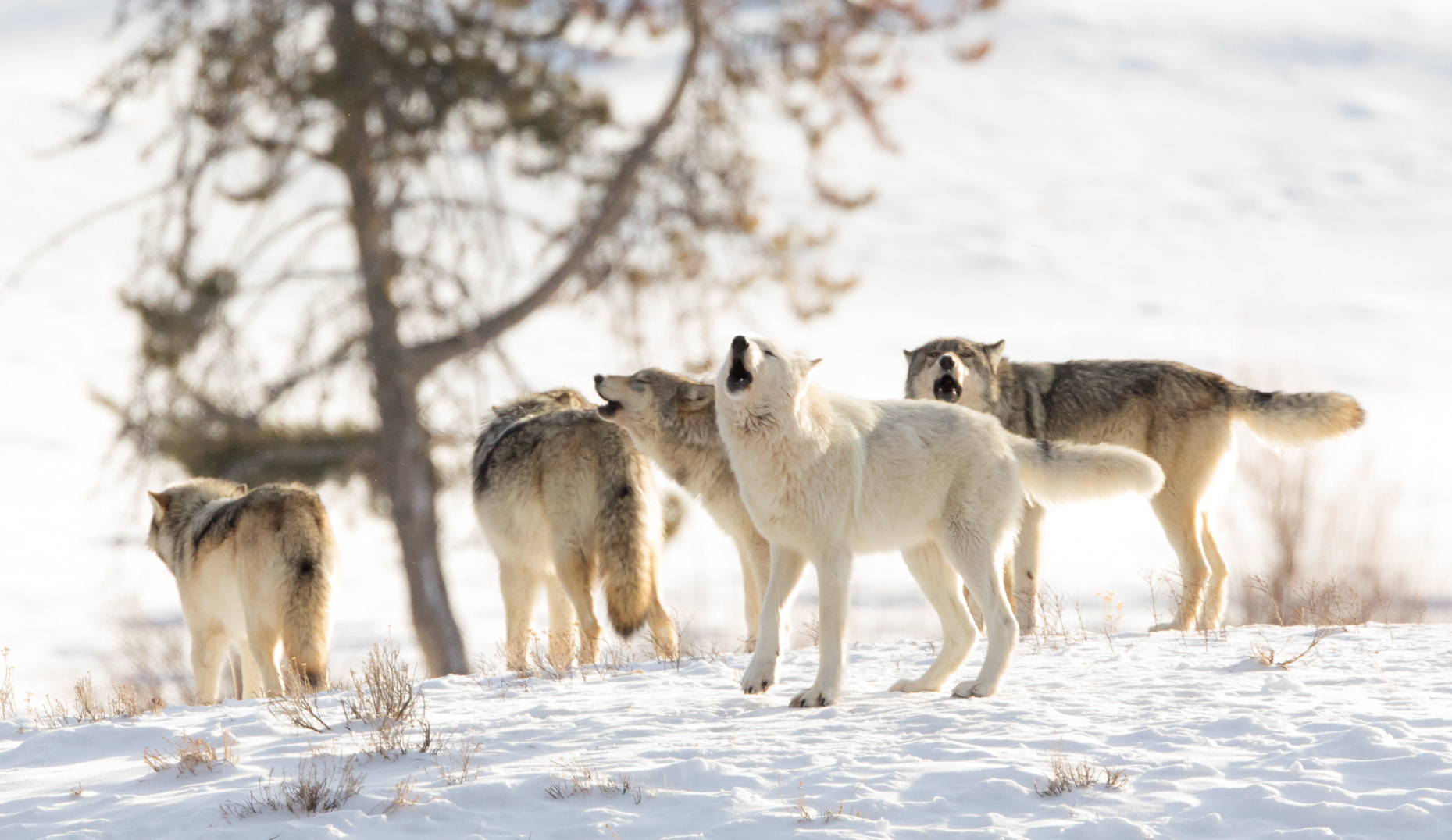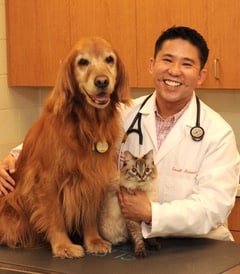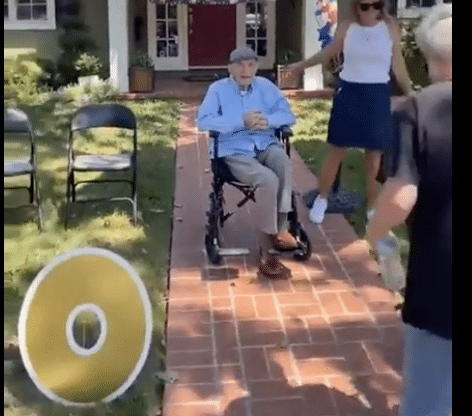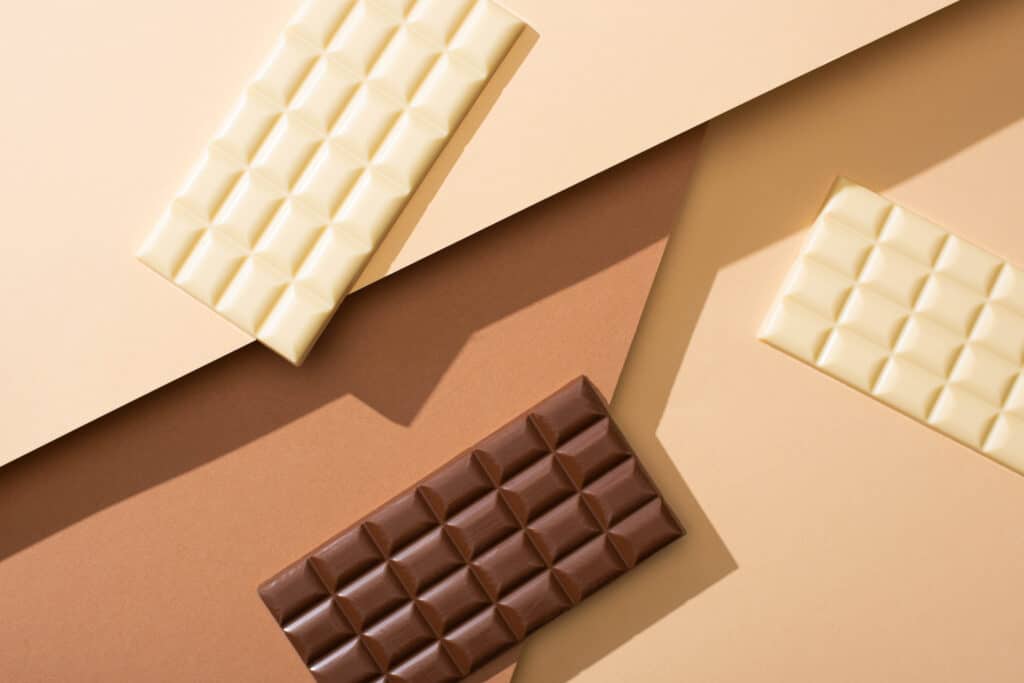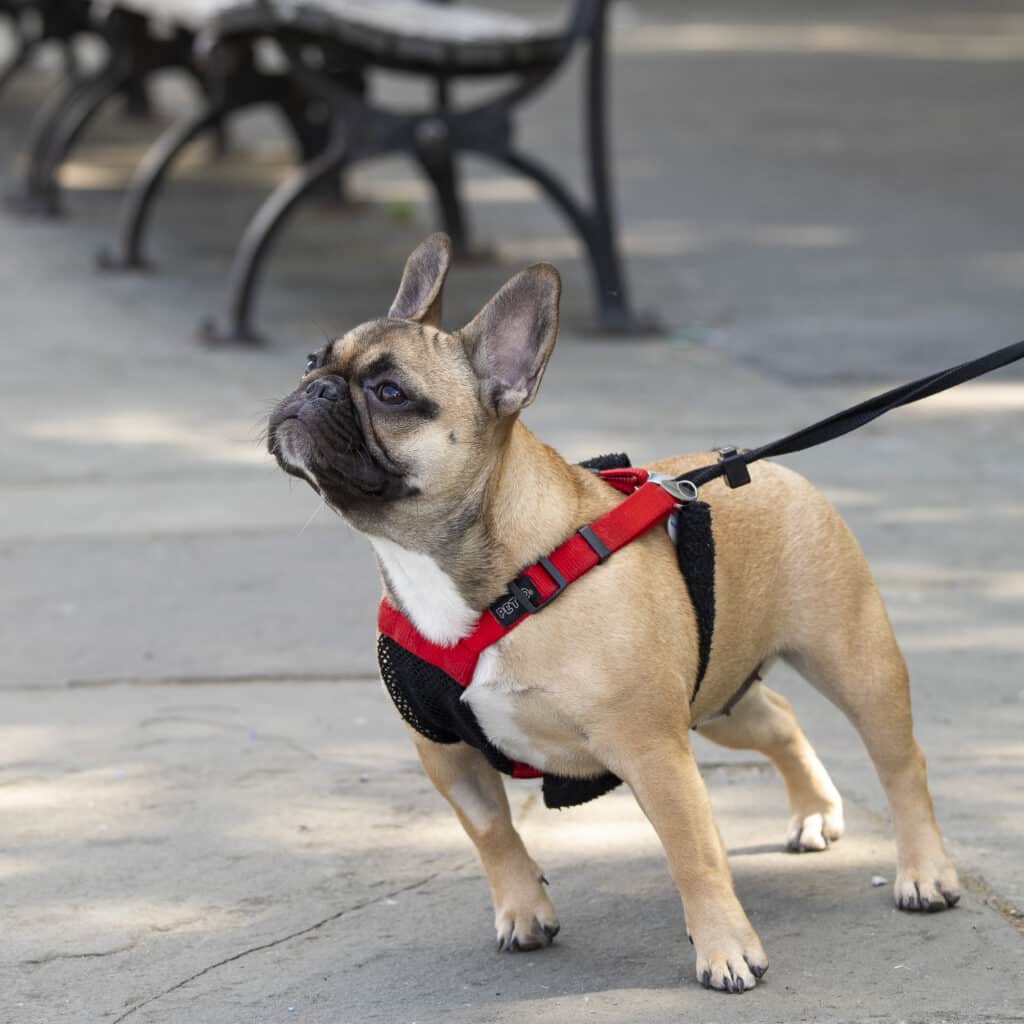I never could contain my excitement anytime I went to my cousin’s house as a kid. This was because my favorite “person” lived there—a miniature Schnauzer named Clifford. He was adorable and sweet, and I quickly became attached to him since I wasn’t allowed to have pets of my own at home. I walked him, fed him, played fetch with him, and cuddled him every chance I got. I also distinctly remember being seven years old and sneaking up from behind to surprise him as the “tickle monster.” He was surprised and, understandably, bit me square on the hand. It was the first time any animal had hurt me. And it was totally my fault. After my uncle cleaned my wounds and dried my tears, I didn’t hesitate to approach him with a treat to say, “I’m sorry.” I still loved him, but I’d learned a hard lesson which still remains with me to this day as a veterinarian: dogs can bite.
It would be great if we could always guarantee that man’s best friend would never bite the hand that feeds him—or any other hands for that matter—but the truth is that even the sweetest and most docile dogs may strike if given no other choice in that situation. After all, they are animals who ultimately need to protect themselves and their beloved when the flight or fight response is triggered.
A dog bite is a traumatizing event that can have devastating effects on everyone, including the victim, the dog, the owner, and society at large. According to the Centers for Disease Control and Prevention and the Humane Society of the United States, approximately 4.7 million people are bitten by dogs each year in the US, making this a significant public health concern. Realistically, we can’t eliminate the possibility of any dog bite from occurring—but we can better understand how to react if it happens, how to cope afterwards, and how to prevent it from happening in the future.
Why dog bites occur
There are numerous reasons dog bites can occur. A dog may bite, for example, if they are a guard dog trained to attack unwanted intruders. Hopefully, you take the hint that a growling or barking dog doesn’t want you in his space; if you don’t, a bite is probably appropriate and well-deserved.
It’s the unexpected bites from unassuming dogs that can be heartbreaking. These tragic events typically arise when a person gets too close to a dog who is fearful or anxious or is guarding a resource like food or a toy. The warning signs from the dog are often present twenty seconds before the bite, but the individual fails to read them and respond appropriately (i.e., retreat). Studies indicate that the majority of victims are young children who are bitten by a familiar dog in the child’s home—often because they have not yet learned how to read dog behavior.
While this article focuses on dogs biting humans, we cannot ignore that dog bites to other dogs or animals can be just as tragic.

A dog at ease in its environment.

A dog exhibiting signs of stress, which could lead to a bite.
What to do when a dog bites
If a dog bite occurs, take immediate action. For the dog bite victim, first aid should include thoroughly cleaning the site with soap and running water to minimize the risk of infection. “Every animal bite should be regarded as potentially dangerous and thoroughly cleaned and treated with appropriate prophylaxis” (Mellor, 1997). After cleaning, open wounds should be covered with clean, absorbent dressing until medical attention is sought. Cold compresses can be applied to bites that bruise but don’t break the skin, to decrease excessive swelling. However, it can be difficult to provide effective first aid for a bite to an inconsolable child’s face, which is exactly where these injuries most commonly take place, according to Dr. Sriram Ramgopal, an Emergency Department physician at the Ann and Robert H. Lurie Children’s Hospital of Chicago. “I have seen some very severe injuries to the face, [with some resulting in] craniofacial fractures.” The average dog bite administers 150-200 pounds per square inch (PSI) of force, which can result in significant damage, especially if a dog bites, clamps, and shakes.
While some dog bites clearly need evaluation and treatment by medical professionals, it is still imperative that you seek medical attention for any dog bite, no matter how minor or trivial you think it is. A seemingly small scratch or wound may just be the tip of the iceberg—a lot more tissue trauma could lie beneath, and consequences such as infection and sepsis (the body’s extreme and life-threatening response to infection) may surface later. Even a lick from a dog’s mouth containing the bacteria Capnocytophaga canimorsus could result in fatal consequences in an immunocompromised individual. The medical team will treat wounds and infections based on the severity of the injury, commonly repairing lacerations and prescribing appropriate antibiotics. Approximately 6,000-13,000 dog bites each year are considered to be severe enough to warrant advanced care, hospitalization, and potential reconstructive surgery. In addition, it is prudent to inform the medical team whether the dog was vaccinated for rabies, which may warrant rabies post-exposure prophylaxis, as rabies infection almost certainly results in death in humans.
As scary as the event is for the person who was bit, don’t forget that a dog bite can be just as scary for the dog. From the nonverbal and verbal reactions of humans in the situation, he will probably recognize that what he has done is wrong. It is important to avoid negative punishment tactics such as yelling, as this can further escalate a dog. Dr. Ramgopal observes that while some parents are angry with the dog, most are not. After ensuring the dog is not physically harmed, confine him to a safe space. If the dog is an unknown stranger dog, be sure to acquire contact information of the owner as well as proof of rabies vaccination. When a dog bites a human, a ten-day quarantine and observation of the dog is required to ensure no transmission of rabies. Keep in mind that rabies laws vary from state to state in the US (http://rabiesaware.org/).
Life after a dog bite
Once a dog bite occurs, it is only after deeming all parties to be safe and healthy that the real healing can begin. For the dog bite victim, it’s about starting to repair the human-animal bond. It is not uncommon, especially for children, to suffer from cynophobia (fear of dogs) after the incident. Professional interventions with therapists and other mental health professionals may be necessary to manage these fears. Ultimately, forgiving the dog is an important key to moving forward to cultivate healthy relationships with canines once again.
For the dog, unfortunately, it is not uncommon for families to consider rehoming, relinquishing, or euthanizing the dog after a dog bite has happened. This decision is not to be taken lightly, but may be considered, particularly if the safety of children is in jeopardy and there is a history of multiple dog bites. Dr. Ramgopal says, “I do not routinely recommend [giving up on the dog], and I am not sure if people would follow this instruction if we did.” He adds that “families will have frequently made up their minds about what they want to do with their dog by the time they even come to the hospital.”
For the dogs that remain in the home, proper training is paramount to avoid future bites. It is important for the dog to be assessed by a veterinarian to ensure no other medical condition is triggering the aggressive behavior. In addition, proper training by a reputable dog trainer with expertise in dog bites can be incredibly valuable. However, what is often more important than training the dog is training all the humans in the household to read the specific behavioral signs of fear and anxiety that may precede a bite, such as lip licking, yawning, widening of the eyes, or exhibiting a crouched posture with the ears back and tail tucked. These cues signal to others to give them space. When boundaries are respected and people actively read dog body language, peace and harmony can be achieved in a family that has suffered a dog bite.
For dogs that have bitten strangers, it is important that owners demonstrate responsible pet ownership by anticipating and avoiding unsafe interactions. Visual aids to indicate that a dog may be uncomfortable around other dogs and people can be key in preventing unwanted conflict. Some people may dress the dog in apparel clearly stating “Please give me space” while trends such as yellow ribbons tied to a leash can be just as effective in communities that have education and awareness around this (Yellow Dog Project).
Preventing dog bites
Dog bites do irreparable damage to dogs’ reputations, fueling emotionally driven, controversial breed bans and pet-unfriendly housing, which is why, as dog lovers, we must do everything we can to stop these catastrophic events before they occur. While hindsight is always 20/20 with any dog bite, there are preventative actions that can be taken. Individual dog training is part of the solution, which can include positive reinforcement training, socializing puppies from an early age, and proactively managing fearful dogs. From a larger societal perspective, the more important part of the solution is educating society, starting with our children, who are most frequently the victims of dog bites. If parents with a newborn or infant are thinking of getting a dog, Dr. Ramgopal explains that “it probably makes sense to wait a few years to add a dog to the family, especially if you are considering a large dog. Children do not know how to interpret all the behavioral cues a dog displays when they are annoyed, in fear or distressed, so if you own a dog and have small children, close supervision and separation is very important.”
This education is critical not only for children in households preparing to acquire a dog, but also for children who have lack of exposure to dogs, like I did when I was a kid. There are numerous dog bite prevention programs (Doggone Safe, The Blue Dog) that can be successfully integrated in schools and communities, and the majority of parents strongly desire this type of training for their children. Although this education and awareness is typically targeted at children, adults can greatly benefit from this prevention training as well. These programs are particularly effective for owners of intact male purebred dogs living in lower income neighborhoods, where dog bites are most likely to occur.
One of the toughest lessons I had to learn as a child was that not every dog enjoys affection or appreciates being treated like another human being. With certain dogs, a gentle pet or giving some space can say “I love you” more appropriately than hugs and kisses can. Even though it pains me to resist being affectionate with every dog I meet, I am confident that with education, awareness, and compassion, every one of us can still love the dog that bites.
References
https://www.cdc.gov/rabies/medical_care/index.html
Bykowski, M. R., Shakir, S., Naran, S., Smith, D. M., Goldstein, J. A., Grunwaldt, L., … & Losee, J. E. (2019). Pediatric dog bite prevention: are we barking up the wrong tree or just not barking loud enough? Pediatric emergency care, 35(9), 618-623.
Hutson, H. R., Anglin, D., Pineda, G. V., Flynn, C. J., Russell, M. A., & McKeith, J. J. (1997). Law enforcement K-9 dog bites: injuries, complications, and trends. Annals of emergency medicine, 29(5), 637-642.
Hovenga, S., Tulleken, J. E., Möller, L. V. M., Jackson, S. A., & Zijlstra, J. G. (1997). Dog-bite induced sepsis: a report of four cases. Intensive care medicine, 23(11), 1179-1180.
Lakestani, N., & Donaldson, M. L. (2015). Dog bite prevention: Effect of a short educational intervention for preschool children. PLoS One, 10(8), e0134319.
Langley RL. Human fatalities resulting from dog attacks in the United States, 1979-2005. Wilderness Environ Med. 2009 Spring;20(1):19-25. doi: 10.1580/08-WEME-OR-213.1. PMID: 19364181.
Meints, K., & De Keuster, T. (2009). Brief report: don’t kiss a sleeping dog: the first assessment of “the blue dog” bite prevention program. Journal of pediatric psychology, 34(10), 1084-1090.
Mellor, D. J., Bhandari, S., Kerr, K., & Bodenham, A. R. (1997). Lesson of the week: Man’s best friend: life threatening sepsis after minor dog bite. BMJ, 314(7074), 129.
Morandi, E. M., Pauzenberger, R., Tasch, C., Rieger, U. M., Pierer, G., & Djedovic, G. (2017). A small ‘lick’will sink a great ship: fulminant septicaemia after dog saliva wound treatment in an asplenic patient. International wound journal, 14(6), 1025-1028.
Brown, C. M., Slavinski, S., Ettestad, P., Sidwa, T. J., & Sorhage, F. E. (2016). Compendium of animal rabies prevention and control, 2016. Journal of the American Veterinary Medical Association, 248(5), 505-517.
Owczarczak-Garstecka, S.C., Watkins, F., Christley, R. et al. Online videos indicate human and dog behaviour preceding dog bites and the context in which bites occur. Sci Rep 8, 7147 (2018). https://doi.org/10.1038/s41598-018-25671-7
Ramgopal S, Macy ML. Pediatric patients with dog bites presenting to US children’s hospitals. Inj Epidemiol. 2021 Sep 13;8(1):55. doi: 10.1186/s40621-021-00349-3. PMID: 34517911; PMCID: PMC8436008.
Siracusa, C., Provoost, L., & Reisner, I. R. (2017). Dog-and owner-related risk factors for consideration of euthanasia or rehoming before a referral behavioral consultation and for euthanizing or rehoming the dog after the consultation. Journal of veterinary behavior, 22, 46-56.
Shuler, C. M., DeBess, E. E., Lapidus, J. A., & Hedberg, K. (2008). Canine and human factors related to dog bite injuries. Journal of the American Veterinary Medical Association, 232(4), 542-546.
Singh, A., Agarwal, M., Singh, A., Katyal, R., Joshi, H. S., & Khan, S. (2018). Knowledge about first aid, wound management and vaccination for the cases of dog bite: a cross-sectional study among the students of a management and technology institute in western Uttar Pradesh. International Journal of Community Medicine and Public Health, 5(1), 280.
Westgarth, C., Brooke, M., & Christley, R. M. (2018). How many people have been bitten by dogs? A cross-sectional survey of prevalence, incidence and factors associated with dog bites in a UK community. J Epidemiol Community Health, 72(4), 331-336.
This article does not take the place of professional or medical advice. Always see your veterinarian to diagnose and treat health conditions in your dog. Love, Dog does not accept any liability for any injury, loss, or damage caused by use of the information provided.
subscription
LOVE, DOG



